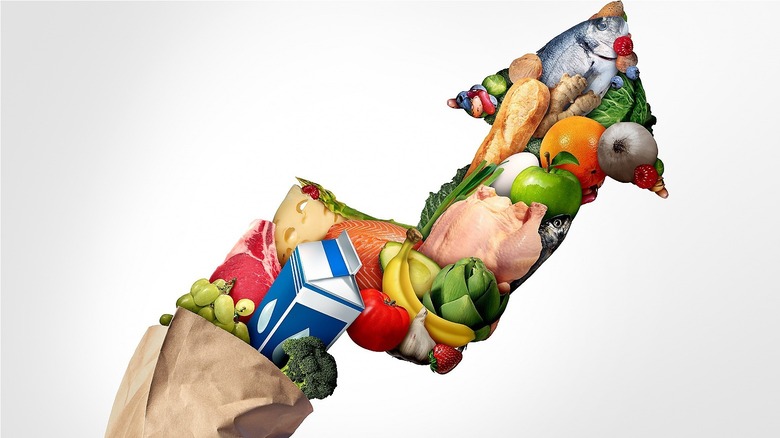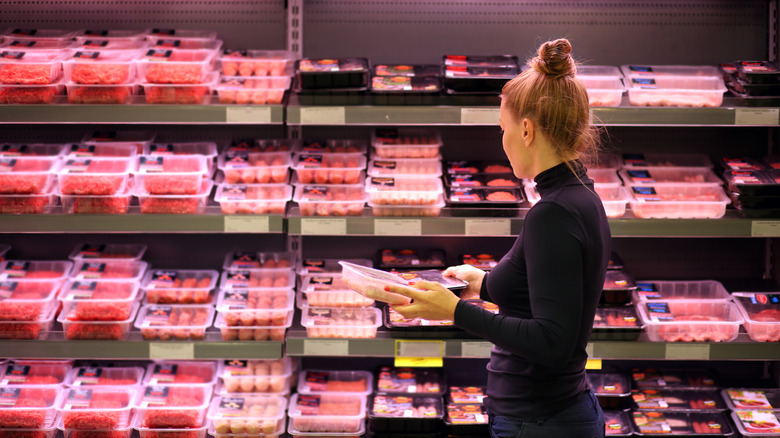Grocery Prices Just Broke A 13-Year Record
According to the latest Consumer Price Index (CPI), as presented by the federal Bureau of Labor Statistics, inflation rose by a record-breaking 7% over 2021. This represents the steepest year-to-year inflationary increase since 1982. The CPI takes into account the prices paid over a period of time for all things U.S. consumers typically spend money on — food being just one and groceries being an even more circumscribed category within the larger category of "food." In other words, the rate of inflation depicted by the latest CPI reflects not only the price of groceries but also the prices of transportation, fuel, shelter, apparel, and medical services. And that includes the price of gasoline, which, as you've likely noticed, has been skyrocketing of late. In fact, the CPI with respect to gasoline alone rose nearly 50% last year.
Although the price of groceries has not risen nearly as precipitously as the price of gasoline, nor even as high as the overall CPI, grocery prices overall are most definitely up. In fact, it would appear that grocery prices are the highest they have been in 13 years (via MarketWatch). But how that ends up impacting your own grocery bill may actually depend upon the categories of groceries that you purchase.
All grocery prices went up, but some more than others
The price of groceries has risen 6.5% over the last 12 months (via Bureau of Labor Statistics (BLS). Putting that into perspective, prior to 2021 and over the previous 10 years, the average annual price increase for groceries was a mere 1.5% (via BLS). However, not all grocery prices have been affected equally, and therein lies the rub.
The CPI divides groceries into six categories: meat (which includes eggs and fish), produce, dairy, nonalcoholic beverages, and cereal and bakery products. By far, the biggest inflationary increase in groceries came from the meat category, for which prices were 12.5% higher than the year prior (it could have been worse if December had not inexplicably offered a brief respite from rising meat prices). The smallest increase was seen with regard to "dairy and related" products, which rose 1.6 % since the previous year, which is to say that prices for buttermilk, ice cream, and cheese barely rose more than the average price increase over the last 10 years. In other words, some grocery prices (e.g., meat) are through the roof, while others (e.g. dairy) haven't risen much more than what is considered average.

